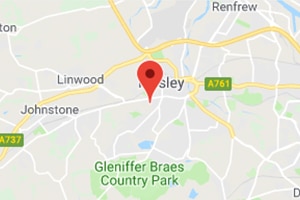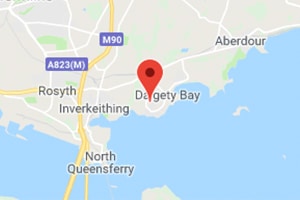Electrical Installation Condition Reports (EICRs) are necessary for ensuring the safety of electrical wiring in properties throughout the UK. According to Electrical Safety First, faulty or outdated wiring systems are still one of the leading causes of house fires, so routine inspections and reports play a really important role in protecting the public.
During the course of this guide, we’ll explain what EICRs are, when they are required, the sections of the report, and the three EICR codes that are used to judge the safety of wiring in properties during inspections. The final section of the guide will provide some practical tips and best practices for carrying out an EICR inspection and filling out the report itself.
What is an EICR?
EICRs are inspection reports that highlight how safe a property’s fixed wiring is. They should be completed by qualified electricians, who will need to carry out various electrical tests and collect information about the property. Any electrician undertaking an EICR should have passed an inspection & testing course. The data that is gathered during the inspection process will be used to recommend actions that must be taken to improve electrical safety.

When Are EICRs Required?
All buildings with electrical wiring should be tested routinely. The recommended frequency of EICRs varies depending on characteristics such as the use of the premises and the level of risk involved.
Public Places and Commercial Premises
All public places and commercial premises should be tested every five years as a minimum. Low-risk buildings such as hotels, educational facilities, and community centres only require testing once every five years. In cases where the risk of harm or damage through an electrical fault is considered to be greater, more regular inspections are required.
Some building types require testing at least once every three years, including:
- Leisure centres
- Industrial units
- Theatres
- Agricultural establishments
Other premises will require testing on an annual basis, including:
- Cinemas
- Swimming pools
- Medical facilities
- Petrol stations
- Fish farms
- Marinas
Domestic Properties
The recommended frequency of EICRs is different for domestic properties. If the property is not being rented out, then an EICR should be completed at least once every 10 years or during a change of occupancy. For rented accommodation, a routine check should be completed each year and a full EICR should be completed every five years or during a change of occupancy.
The Sections of an EICR
As you can see from the image of an EICR above, the report is broken down into various sections to be filled out by the inspecting electrician. The beginning of the document covers the details of the client/installation; the purpose, extent, and limitations of the inspection, and a summary of the outcome.
Next, the inspector will write out their recommendations for actions to be taken, providing the relevant EICR code for each item (see the section below) and indicating whether any further investigation is required. Before the technical inspection part of the report, the inspector will specify the amount of time before the next EICR is required and provide their own details.
The rest of the report contains the technical details of the inspection, including:
- Electrical supply characteristics and earthing arrangements
- Particulars of installation at the origin (such as means of earthing, circuit breaker details etc.)
- An inspection schedule for distribution boards and circuits
- Details of the test instruments used
- Distribution board measurements
EICR Codes Explained
The EICR codes in the recommendations section and inspection schedule of the report are used to indicate the level of risk associated with a particular item and the action that needs to be taken. There are three different codes:
- C1 – there is a danger present that represents a risk of injury (immediate action is required)
- C2 – there is a potential danger present (urgent action is required)
- C3 – improvement is recommended
Applying EICR Codes
Inspecting electricians should code items on the schedule based on the latest edition of the wiring regulations. For example, when reporting the safety of the metering equipment at a site, the inspector should refer to the wiring regulations to determine whether the metering at the premises conforms to the latest standards.
The C1 and C2 codes mean that an action is legally required of the property owner and should be reserved for certain situations. In situations where you spot something that could become a danger due to a fault or unforeseeable event, use a C2 code. If any part of the electrical installation represents an immediate risk to anyone using it, then the C1 code is more appropriate.
C3 codes should be used for situations in which there’s no immediate danger but improvements would lead to significant enhancements to the safety of an electrical installation. Even in cases where the installation doesn’t fully comply with the most current standards, not all outdated installations need upgrading. As the best practice guide for EICRs states:
Existing installations that have been constructed in accordance with earlier editions of the Standard may not comply with the current edition in every respect, but this does not necessarily mean that they are unsafe for continued use or require upgrading.
Another point to note about C3 codes is that the vast majority of owners will not take action based on a C3. For this reason, If an item of electrical installation requires attention to prevent any potential danger, then you must use the C2 code instead of the C3.
The Importance of Correct EICR Codes
The electrical inspector is responsible for EICR codes that are assigned during an inspection and what happens as a result. The codes play a vital role in ensuring that wiring is safe and does not endanger any members of the public. Whilst it can be difficult to decide on which code to apply, the inspector must make sure that they are completely satisfied with it before submitting the report.
Clients will often pressure electrical inspectors to downgrade an item from a C2 to a C3 so that they can legally avoid taking any action and save money. Decisions regarding EICR codes are solely down to the inspector and they should not allow themselves to be influenced in any way – by declaring that a dangerous item does not need any action, you could endanger someone’s life.
Equally, some contractors are tempted to apply C3s almost universally in the hopes of retaining customers by reducing the amount they have to spend on actioning EICR outcomes. Whilst this may secure more business for you in the short term, the consequences could be potentially catastrophic. If property damage occurs as a result of an incorrect EICR, the inspector will be liable for insurance claims; if anyone is injured or killed due to miscategorised electrical safety items, the inspector could face criminal prosecution.
Inspecting a Property for an EICR
Although we’ve covered when EICRs are required, their contents, and the codes, the real challenges lie in identifying and classifying potentially dangerous items of electrical installation. This skill definitely comes over time with experience, but there are certain aspects that everyone should pay particular attention to during an inspection.
The decisions you make should always be consistent with the current edition of the wiring regulations. In addition, when inspecting a property for an EICR, you should make sure to focus on the following characteristics of the installation during the assessment:
- Safety
- Wear and tear
- Corrosion
- Damage and deterioration
- Excessive loading
- Age
- External influences
- Suitability (taking account of any changes in use or building extensions etc).
When writing up your observations and recommendations, be as clear and concise as possible. Remember that you need to describe any electrical faults in full detail, outlining exactly what’s wrong – do not just state the actions needed to remedy the problem as this could be subjective. Try to avoid using technical terms when it isn’t necessary to do so.
Hopefully this guide has answered any questions you had about EICRs. If you have any further questions, don’t hesitate to get in contact. For those who need updated training on the 18th edition wiring regulations, take a look at our range of electrician training courses & 18th edition courses.

